|
|
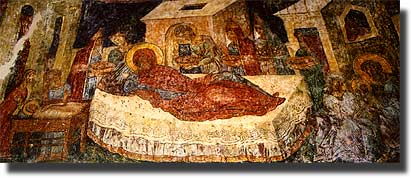
Frescoes and Mosaics still adorn many of the walls in the churches in Mystras. The one on the left is the Birth of the Virgin. Frescoes are made by applying paint to a wet stucco surface. Mosaics are made by cementing small pebbles, jewels or gold pieces to the wall or the floor to create a large scene. In Mystras, many have been chipped off (iconoclasticism) or been peeled away. However, enough remain to give an idea of just how visually overwhelming these places were during their heyday. |
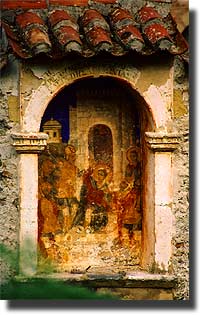 |
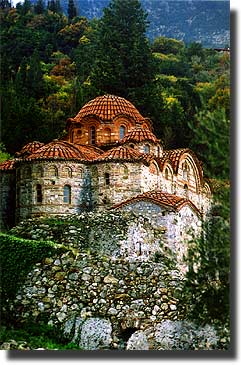
Monastery in Mystras |
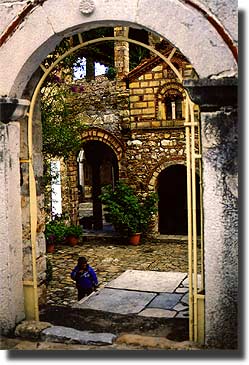
An arch leading into the courtyard of a Venetian palace. |
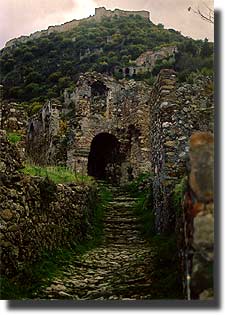
The Crusader Fortress as seen from the second defensive wall. Gates were considered weak links for security and were never very big. The theory goes that a small entrance means those on the inside can easily knock off the few from the outside who can get through at a time. |
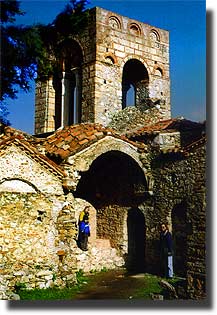 |
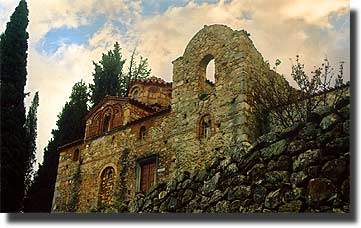
Byzantine churches - created between 1259 and 1430 CE. No mosques remain from the Turkish occupation of Mystras. We don't know if this is because they were never built, they were destroyed by Christian Venetians, or were razed after a fire late in the 1790's. |
|
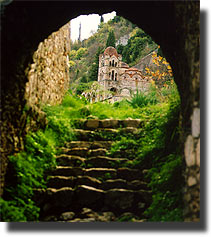 |
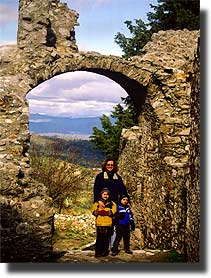
Mom and kids exploring the ruins in Mystras. We all drove to the top and walked down through 500 years of history. Dad got the pleasure of walking back UP to return with the car:) |
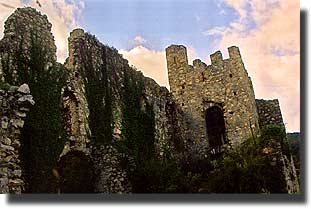 |
![]()
| Skopje | Thessaloniki | Amfissa | Delphi | ||||
| Epidauros | Nafplio | Mycenae | Argos | ||||
| Mystras | Spartia | Corinth | Main page |